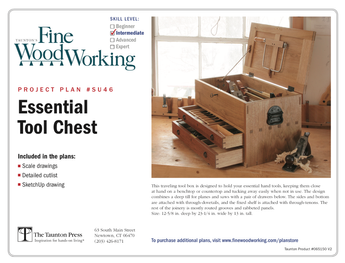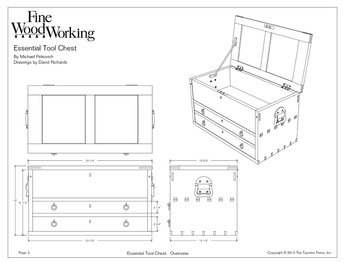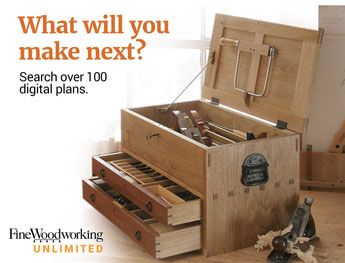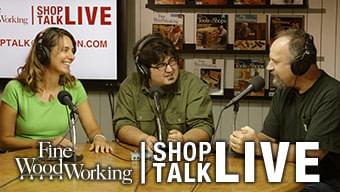Have had some issues lately with brass slotted head wood screws snapping. Pre drilled appropriately with tapered drill, I use a steel leader screw to create the thread, followed by a waxed brass screw.
I make reproductions and would really like to find “antique looking and period authentic” screws that won’t snap so easily.
Any suggestions?














Replies
I don't think any brass screws are very strong. I pre drill like you mention, use lube from a wax toilet bowl ring. (New, not recycled.) I also only use hand tools, no power drill drivers. Wonder what other folks do.
I agree that all brass screws are susceptible to breakage under torsion forces. Would bronze be an acceptable substitute? Bronze is much stronger. I've refastened planking on an entire (large) boat with bronze fasteners and don't remember any of them breaking off (full disclosure, this was a long time ago and maybe one or two broke out of hundreds/thousands, but it was a rare event if it happened). Any marine supply store should stock silicon bronze fasteners. Here is one site:
https://www.jamestowndistributors.com/product?filterBy=%26filter.g_fastener_type:Wood%2520Screws%26filter.g_fastener_type:Wood%2520Screws%26filter.g_fastener_type:Wood%2520Screws%26filter.g_fastener_type:Wood%2520Screws%26filter.g_head:Round%2520Head%26filter.g_head:Round%2520Head&queryBy=%26q%3Dbronze-wood-screw%26category%3Dtrue
My guess as to why some of your brass screws are snapping is that even though you pre-drilled with an “appropriate tapered drill,” it was probably still a bit too small of a pilot hole to adequately clear the root diameter of the brass screw. When you precut the threads in the wood using a steel screw, some of the wood that was displaced by the thread cutting action of the steel screw probably ended up reducing the diameter of the tapered pilot hole. Additionally, your period-correct brass screws probably have an unthreaded straight shank portion directly under the head. This straight area may be slightly too tight in the tapered pilot hole, further exacerbating the problem. None of these potential problems that I have mentioned would ever be a concern for steel screws.
So, what to do? This is what I have done, in addition to the absolutely appropriate steps that you are already taking, in many situations over the years and I can’t recall having ever snapped a brass screw (but as others have noted, there were probably one or two that I just don’t remember):
First, and foremost, I do a trial using exactly the same size screw and wood (if possible) to be sure that the additional drilling suggested in the following steps is adequate to solve the problem, without making the pilot holes too large.
Second, after drilling the tapered pilot hole and cutting threads with an appropriately-sized steel screw, I then re-drill the pilot hole using a straight bit, just larger than the root diameter of the brass screw, but smaller than the outer thread diameter. Since you indicate that you make reproductions, and this may be a normal process for you, it might pay to take a look at letter or number sized bits, which will come in increments smaller than 1/64” that are typical in the sets of bits that most woodworkers own. This re-drilling can help to remove any displaced wood from the thread cutting, and also provide you with a looser fit than the tapered bit may have originally provided. As an alternative, you could also consider just starting with a bit of this size and forgo the use of a tapered bit altogether (I often did this).
Lastly, if the straight shank portion of your brass screw is too tight in the tapered pilot hole, re-drill the upper part of the pilot hole with a properly-sized straight bit that only goes deep enough to allow the straight shank to avoid any tightness in the tapered zone. Effectively, you are drilling a stepped pilot hole for the brass screw.
While these steps may seem involved, they actually go extremely fast once you have determined the proper drill diameters and depths to open up your pilot holes. Make a note of the drill bit sizes on your box of screws and you can avoid going through the trial process in the future.
Good luck.
I’ve had problems myself with brass screws snapping and I’m certain I’ve used proper drill sizes. I’ve had better luck with Horton Brass screws but I still feel uneasy. I’d probably try the bronze ones myself as mentioned above.
As stated, I pre-drill, pre-run a steel screw with the same thread, and then simply screw in the brass screw to those threads by hand. Haven't snapped one since I started using this technique. As to source . . . Van Dyke's 'Restorer's Classic' and the like are nice.
https://www.vandykes.com/restorers-classic-5-x-5/8-inch-slotted-round-head-screws-pack-of-20/p/225613/
Thanks everyone for time taken to leave all of the tips. All really useful stuff.
Bronze and more attention to counter drilling is hopefully the answer.